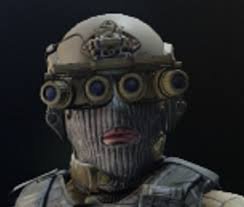When discussing Quad Nods, it’s crucial to understand the specific elements that make this technology unique. The core principle behind Quad Nods is their use of four nodal points—essentially, the foundation of balance and movement. This structure, which is employed in everything from autonomous vehicles to prosthetic limbs, improves the mechanical efficiency of the system by optimizing the force and motion exerted by each nodal point.
The beauty of Quad Nods lies in their ability to enable systems to respond instantly to changes in their environment. In a prosthetic leg, for instance, each nodal point adjusts dynamically to shifts in weight distribution, so the wearer can continue walking or running without stumbling. In robotic systems, this adaptation allows machines to perform intricate tasks without requiring constant manual intervention.
Because Quad Nods function seamlessly in real-time, they enhance the overall user experience by making it intuitive and fluid. With the right algorithms and data processing, Quad Nods can essentially anticipate the next necessary movement, making systems more responsive and reducing the need for complex programming or control systems.
Quad Nods and the Evolution of Assistive Technologies
Another powerful aspect of Quad Nods is their integration into assistive technologies. For many individuals with disabilities or mobility challenges, assistive devices like wheelchairs, prosthetics, and exoskeletons have provided a measure of independence. But these devices often lack the advanced response mechanisms needed to mimic natural human movement. Quad Nods bridge this gap by offering highly adaptive systems that more accurately replicate human biomechanics.
Take, for example, a powered exoskeleton. A few years ago, these systems were bulky and difficult to use. They were often designed for very specific movements, meaning users had to adjust their motions to suit the device rather than vice versa. However, with the incorporation of Quad Nods, these exoskeletons are evolving into more sophisticated devices that anticipate the user’s movements. They adjust their response to walking or running patterns, making the device feel more natural and supportive.
Moreover, these systems enhance the physical rehabilitation process. When patients use rehabilitation robots that integrate Quad Nods, they experience more fluid movements during therapy sessions. The system adjusts to the individual’s needs, offering a tailored experience that speeds up recovery and improves the outcomes of therapy. This makes rehabilitation not only more efficient but also more accessible, especially as exoskeleton technology continues to improve in affordability.
How Quad Nods Enable Precision in Industrial Robots
Industrial robots have been around for decades, used in everything from automotive assembly lines to electronics manufacturing. However, one of the biggest challenges in industrial automation has always been precision. Robots often struggle with tasks that require both high levels of dexterity and the ability to adapt quickly to variations in their environment. Quad Nods offer a way to overcome these limitations.
In manufacturing, precision is key. Whether it’s assembling delicate parts or performing intricate welding, robots must maintain both balance and stability while performing highly specialized tasks. Quad Nods increase robotic performance by helping them adjust their movement dynamically. For example, robotic arms that incorporate Quad Nods can adjust the pressure applied when holding parts, ensuring that delicate components are not damaged in the process.
This technology can also extend to other areas of manufacturing, such as packaging or sorting. Quad Nods improve the robot’s ability to handle a variety of objects by dynamically altering their approach based on size, weight, and shape. This can be especially beneficial in industries like food production, where products vary in size and shape and require gentle handling.
The Transformational Impact on Autonomous Vehicles
Another rapidly evolving area where Quad Nods are making a big impact is autonomous vehicles. As the demand for self-driving cars, trucks, and drones grows, the need for highly adaptive and stable systems increases as well. Quad Nods provide a solution to the complex mobility challenges faced by autonomous vehicles, ensuring that these vehicles can not only navigate but also respond effectively to unexpected changes in their environment.
For example, when an autonomous car is navigating through dense urban traffic, Quad Nods allow it to adjust to sudden stops or sharp turns more efficiently, maintaining the stability of the vehicle. This is particularly valuable when faced with uneven road surfaces, potholes, or sudden obstacles that might require immediate changes in the vehicle’s speed or direction. Quad Nods provide the necessary balance and control that allows autonomous vehicles to make these adjustments in real time.
In addition, Quad Nods are key to ensuring that vehicles are better equipped to handle adverse weather conditions, such as snow or rain. By incorporating Quad Nods into the vehicle’s suspension system, these cars can react more effectively to changes in the road’s texture, improving traction and driving safety. This could significantly reduce accidents caused by road conditions and unpredictable weather, making autonomous driving much safer in the long term.

The Role of Quad Nods in Space Exploration and Extraterrestrial Mobility
One of the most challenging aspects of space exploration is mobility. On other planets like Mars, the terrain is rugged and unpredictable, making it difficult for rovers and robots to navigate effectively. Here, Quad Nods offer a solution by enabling better movement across alien surfaces.
Mars rovers equipped with Quad Nods can adjust their movement patterns in real time to maintain balance, even when navigating the rocky and uneven surface of the Red Planet. Unlike traditional rovers, which are limited by rigid movement protocols, these rovers can make smooth, adaptive transitions, even when facing steep slopes or large obstacles.
Additionally, astronauts themselves could benefit from Quad Nods during spacewalks or exploration on other planets. Space exoskeletons that incorporate Quad Nods could help astronauts maintain stability while performing delicate tasks in microgravity environments. The ability of these suits to adjust to the astronaut’s movements would ensure that tasks, such as repairing satellites or collecting scientific data, are done more efficiently and with greater safety.
How Quad Nods Could Impact Sustainability
As industries continue to focus on sustainability, the role of Quad Nods in helping reduce environmental impact cannot be overstated. This technology plays an important role in improving the efficiency of various systems, from vehicles to robots, ultimately helping to reduce energy consumption and emissions.
In autonomous vehicles, for instance, Quad Nods optimize movement in ways that decrease fuel consumption. This leads to fewer emissions, contributing to a more eco-friendly transportation system. The energy efficiency provided by Quad Nods ensures that the vehicle uses just the right amount of power required for each specific task, improving the overall energy footprint.
The same principles apply to manufacturing robots that operate in industries like food production and material handling. By adjusting the robot’s speed and precision dynamically, Quad Nods reduce the overall energy required to complete tasks. This decrease in energy consumption is particularly important in large-scale manufacturing facilities where energy costs are high, and minimizing waste is critical for both economic and environmental reasons.
Conclusion: The Future is Bright for Quad Nods
The potential of Quad Nods is limitless. From enhancing robotic mobility to revolutionizing prosthetics and autonomous vehicles, this technology is changing the way we think about movement and precision. As industries continue to embrace Quad Nods, we can expect even more groundbreaking innovations that will redefine how we live, work, and travel.
Whether it’s enabling better mobility for people with disabilities, improving the efficiency of manufacturing processes, or ensuring the safety of autonomous vehicles, Quad Nods are playing a pivotal role in shaping the future. As this technology continues to evolve, its impact will only grow, offering new solutions to some of the most pressing challenges of our time.
The future of mobility is adaptive, precise, and efficient—and Quad Nods are at the forefront of this transformation.
